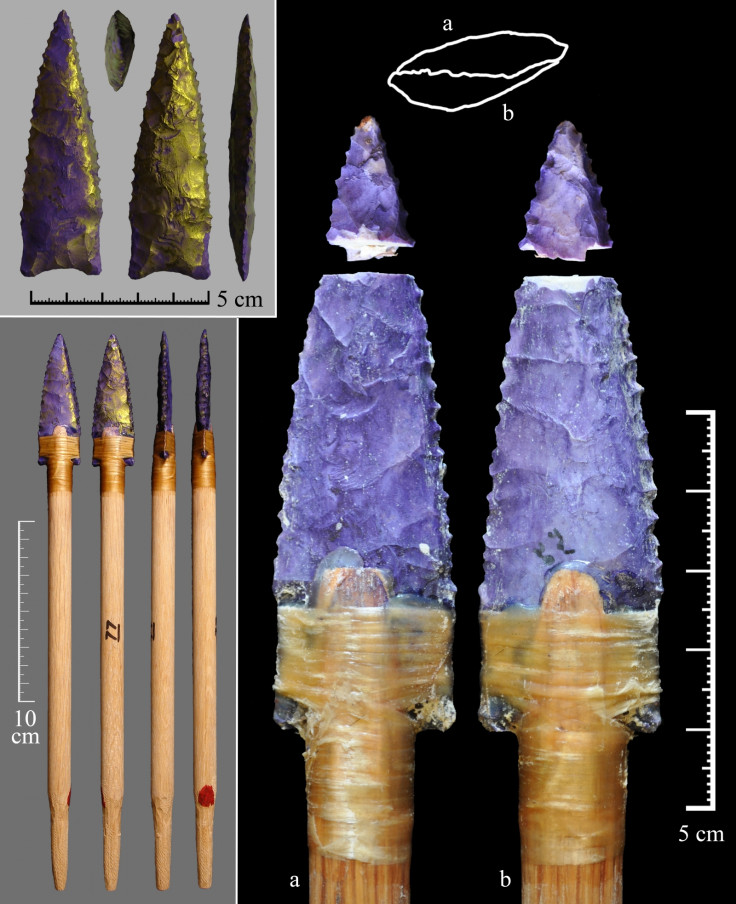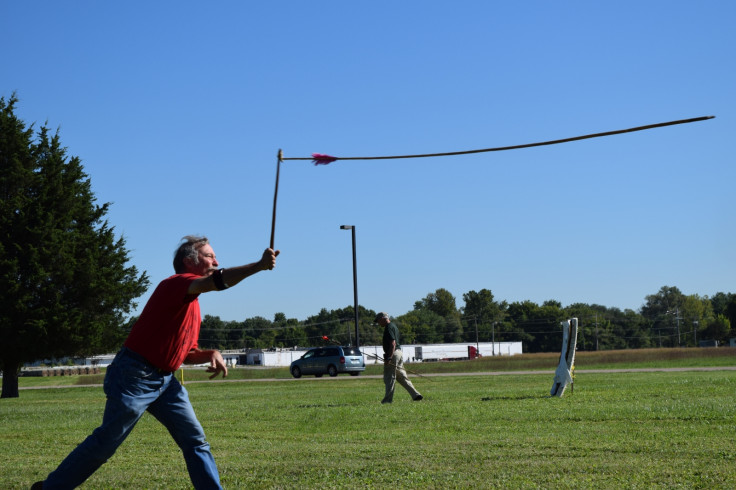North American prehistoric Clovis people threw darts at mammoths at nearly 80 miles an hour
They wielded atlatl darts to kill prey many times their size.
Sharpened stone tips used for hunting the enormous beasts of the Pleistocene era are a common archaeological find – but exactly how they were used, and what they were capable of killing, is more of a mystery.
The Clovis people, some of the earliest humans to colonise North America, used heavy stone darts to tip their spears. But how far and fast did these weapons go? Probably up to about 80 miles per hour, finds a study published in the journal PaleoAmerica.
"This is the period at the end of the Pleistocene, where early humans are hunting the extinct animals like mammoths. We're talking about cultures called the Clovis people and the Folsom people, who hunted the Pleistocene bison after mammoths became extinct," study author John Whittaker of Grinnell College in the US told IBTimes UK.
Curiously, Clovis people are thought to have continued to use heavy darts to hurl at prey using an atlatl, or spear-thrower, even after the invention of the lighter and more accurate bow and arrow. What makes an atlatl such a good weapon?
Whittaker and his colleagues recreated ancient atlatls and put them to the test in a series of experiments to test their speed and destructive force.
"The Clovis people were fully modern humans," said Whittaker. "They would certainly be very strong and fit, but we have people who are pretty fit and strong throwing with us now.
"We're not recreating the past but we now have a lot of people who have practised very hard to get good at this method. Many have hunted with it successfully. So we have a good idea of the normal human capability."
They found that an atlatl could be used to hurl a dart at up to about 78 miles per hour. The heavier the dart, the more penetrative force it had when hitting a target – such as a hog carcass. But with increasing the size of the weapon, there comes a trade-off.

"The length of the atlatl system affects how hard you can throw and how much leverage you have. But you rapidly reach a point where the human arm really can't operate that long lever if you've got too much weight on it."
Seeing first-hand how difficult it is to wield an atlatl can inspire respect for prehistoric people, as well as understanding how they fought and hunted, Whittaker said.
"All archaeology is a case of imaginative reconstruction based on evidence. We use what we know about these prehistoric spear-throwers and their weapons as a basis for finding out more about them and their culture."

© Copyright IBTimes 2025. All rights reserved.






















